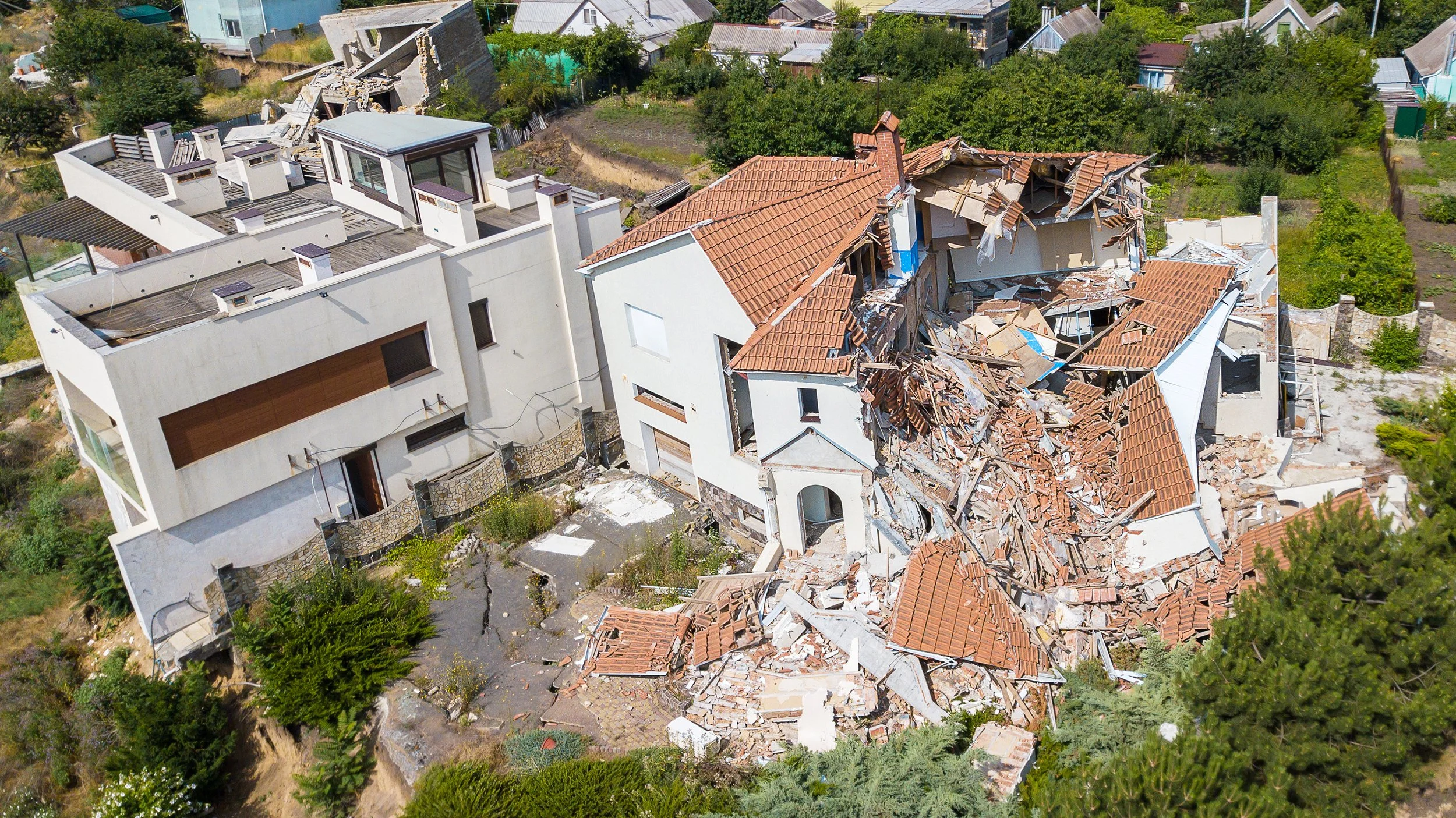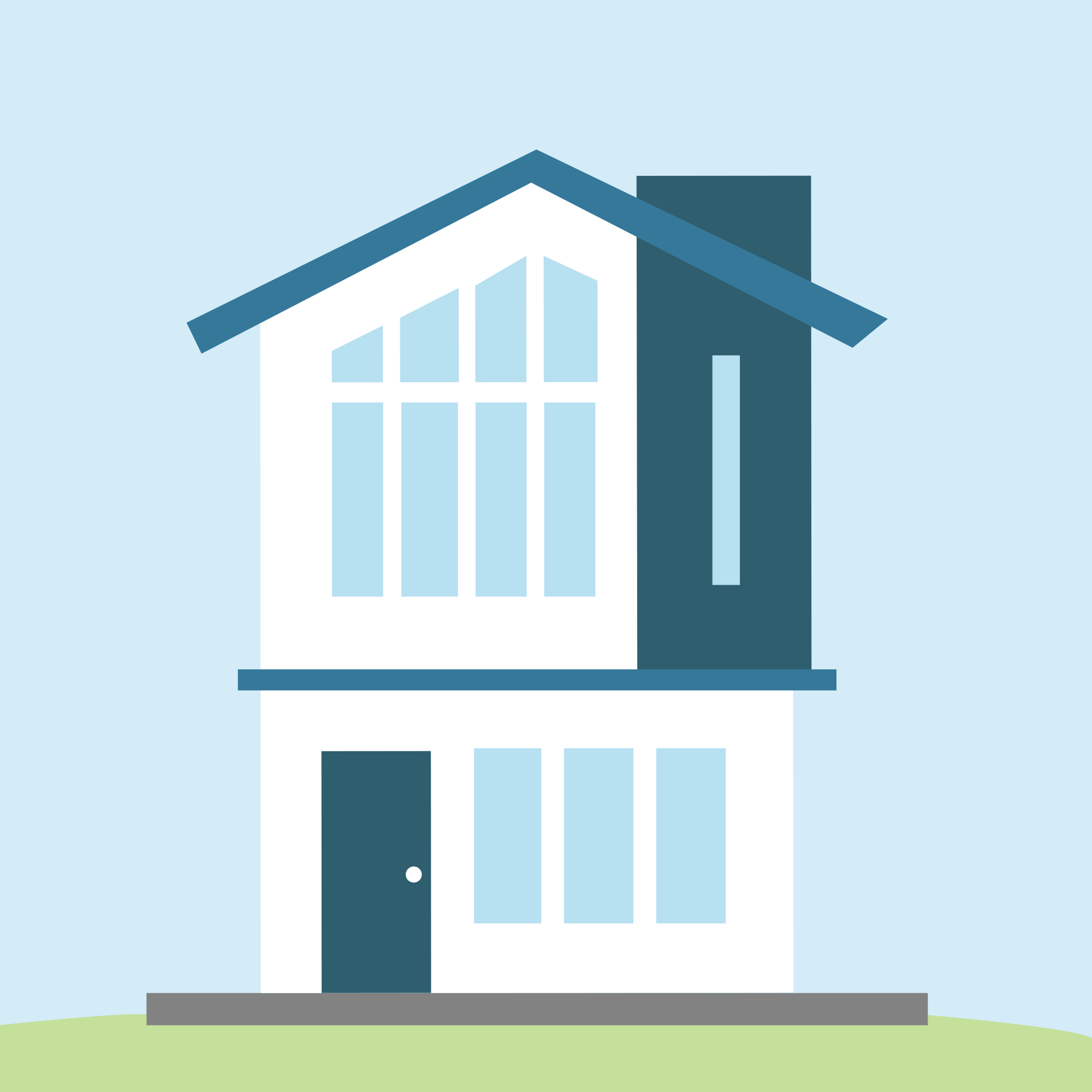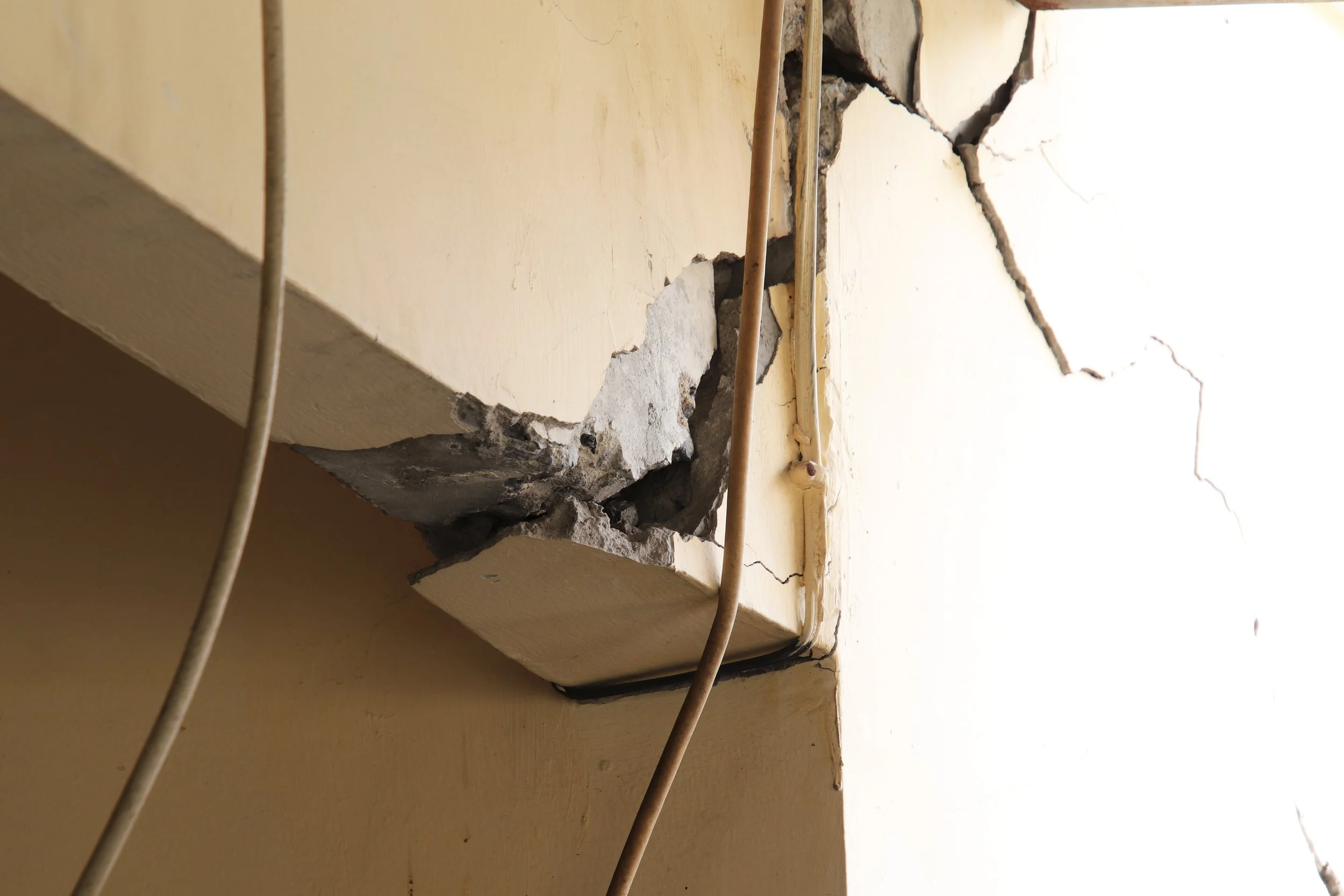Understanding Earthquakes in Australia
Australia experiences on average 500-600 earthquakes per year. Most are too insignificant that their effects cannot be felt or seen. Yet, some earthquakes have been devastating to homes and businesses. In this blog post, we will discuss everything you need to know about earthquakes, how they can affect your home and how to best prepare for them.
What is an earthquake?
An earthquake is a shaking or trembling of the ground caused by movement in the Earth's crust. This movement is caused by the shifting and sliding of large chunks of rock called tectonic plates. When these plates grind against each other or one plate is forced underneath another, a huge amount of energy is released, which causes the ground to shake.
This shaking is what we experience as an earthquake. The shaking can be gentle or violent, it can last for a few seconds or even a few minutes. The shaking can also cause destruction and damage, resulting in events like landslides and tsunamis.
Earthquakes can happen in any location on the Earth, with tectonic activity taking place both on land, as well as under the sea. They often occur near plate boundaries but can occur anywhere within the plate as well. The earthquakes magnitude, duration, depth, and aftershock pattern vary depending on how deep beneath the earth's surface it is.
When earthquakes occur, they cause what we call ‘seismic surface waves’ which are the different types of movement caused. The four main types of seismic surface waves are Love waves, Rayleigh waves, Primary waves and Secondary waves.
Rayleigh Waves: also known as ground roll, these are surface waves that cause the ground to move in a circular motion
Love Waves: named after the British mathematician Augustus Love, move the ground from left to right
Primary Waves: these are compression waves that move between the earth's interior and are the fastest type of wave
Secondary Waves: these are waves that move in an ‘up and down’ motion. They travel slower than P waves causing more damage because of their strong shaking motion.
A collapse of a bridge due to an earthquake.
Adobe images: Anlomaja
How often do we experience earthquakes in Australia each year?
Australia experiences a moderate number of earthquakes each year. According to data from the Australian Government's Bureau of Meteorology, there are around 500-600 earthquakes in Australia each year that are large enough to be felt by people. The majority of these earthquakes are small, with magnitudes of 2.0 or less.
The earthquakes that occur naturally in Australia are mostly caused by tectonic activity along the west coast of the continent. Particularly in the vicinity of the Perth Basin and the Yilgarn Craton. These earthquakes tend to be of a lower magnitude, usually less than 5.0.
It's worth noting that Australia is not a high seismic activity zone. It has a relatively low risk of destructive earthquakes compared to other parts of the world. Earthquakes that have occurred in Australia have caused damage and destruction. Yet, this damage is less severe than earthquakes in more seismically active regions.
The Modified Mercalli Intensity Scale
The Modified Mercalli Intensity Scale (MM or MMI) is a seismic scale used to measure the intensity of an earthquake. It is based on 2 measurement scales:
The amount of damage caused by the earthquake
Observations of the intensity made by people who experienced the earthquake.
The scale ranges from I (not felt) to XII (total destruction). Each level of the scale corresponds to a specific level of damage and intensity. The levels of the Modified Mercalli Scale are as follows:
I. Not felt except by a very few under especially favourable conditions.
II. Felt only by a few people under very favourable conditions.
III. Felt quite noticeably by people indoors, especially on the upper floors of buildings. Many people do not recognise it as an earthquake. Standing vehicles may rock slightly. Vibrations like the passing of a truck. Duration estimated.
IV. Felt indoors by many, and outdoors by few during the day. At night, some awakened. Dishes, windows, doors disturbed; walls make cracking sounds. Sensation like a heavy truck striking building. Standing cars rocked noticeably.
V. Felt by nearly everyone; many awakened. Some dishes, windows broken. Unstable objects overturned. Pendulum clocks may stop.
VI. Felt by all, many frightened. Some heavy furniture moved; a few instances of fallen plaster. Damage slight.
VII. Damage negligible in buildings of good design and construction. Slight to moderate in well-built ordinary structures. Considerable damage in poorly built or badly designed structures. Some chimneys broken.
VIII. Damage slight in specially designed structures. Considerable damage in ordinary large buildings with partial collapse. Damage is great in poorly built structures. Fall of chimneys, factory stacks, columns, monuments, walls. Heavy furniture overturned.
IX. Damage considerable in designed structures; well-designed frame structures thrown out of plumb. Damage great in large buildings, with partial collapse. Buildings shifted off foundations.
X. Some well-built wooden structures destroyed; most masonry and frame structures destroyed with foundations. Rails bent.
XI. Few, if any (masonry) structures remain standing. Bridges destroyed. Rails bent.
XII. Damage total. Lines of sight and level are distorted. Objects thrown into the air.
It's worth noting that the Modified Mercalli scale is used to measure the intensity of an earthquake, as opposed to the magnitude, which describes the energy released during the earthquake.
The destruction of a large house caused by an earthquake.
Adobe images: Oleksii Nyonchuk
So, how could an earthquake affect your home?
Earthquakes can have devastating effects on homes and other buildings. When the ground shakes, it can cause structural damage, broken pipes, and even fires. Damage can be separated into two primary types of movement: the typical shaking-type of movement people think of when picturing an earthquake and soil liquefaction. Let’s break these down:
When an earthquake occurs, it will typically cause a structure to rock back and forth. This is the typical shaking motion that is produced by an earthquake and can cause horizontal or ‘X’ shaped cracking. You may see this on your external walls, especially between large, closely spaced windows/doors.
Soil liquefaction is a phenomenon that occurs during an earthquake when the soil behaves like a liquid, causing the ground to lose its strength and stiffness. This happens when the ground is subjected to strong shaking, causing the soil particles to lose contact with each other and allowing water to flow freely through the soil. As a result, the ground can lose its ability to support structures, causing them to sink or tilt. This causes water deep in the ground to suddenly rise up in the surface.
Example of the typical shaking-type of movement associated with earthquakes.
Image supplied by Arbiter Group: Millie G
A combination of strong shaking, loose soil particles and water-saturated soil can cause soil liquefaction.
Image supplied by Arbiter Group: Millie G
The different types of effects an earthquake can have on homes and other buildings:
Aesthetic damage
An earthquake can cause a variety of aesthetic damage to a home, including cracks in walls, broken windows, damaged roofs, fallen objects and debris, and displaced or shifted fixtures like cabinets and doors. The damage can range from minor to severe, depending on the magnitude of the earthquake and the stability of the building. In some cases, the damage can also affect the overall appearance and value of the property.
Structural Damage
One of the most obvious ways an earthquake can damage a home is through structural damage to the foundation, wall and roof framing. This can include cracks in the walls or ceiling, broken or separated chimneys, and structural deformations. In severe cases, the home may become uninhabitable if the damage is extensive enough.
Broken Pipes and Flooding
Earthquakes can also cause broken pipes and flooding, which can lead to extra damage to the home. The shaking can cause pipes to break, leading to water damage and mould growth. If an earthquake occurs near a body of water, it can also lead to flooding.
Fires
Earthquakes can also spark fires, either from broken gas lines or from fires caused by broken appliances or other equipment. These fires can cause extensive damage to the home and can also be deadly.
Image of significant masonry structural damage.
Adobe images: Anlomaja
Observations from the September 2021 Victorian Earthquake
In September 2021, Victoria experienced an earthquake that was recorded as a level of “VI” at the epicentre. The intensity of an earthquake dissipates over distance. This means that though the earthquake was felt by many, even those that were hundreds of kilometres away from the epicentre, the movement was not experienced at the same level. The intensity of the movement would have been less intense the further away it travelled from the epicentre.
Although the earthquake was recorded as level “VI”, buildings in Victoria faired pretty well against it. A reason for this was due to the epicentre occurring in a sparsely populated area. The only structural damage that was observed had occurred in poorly constructed and maintained dwellings, garages, sheds and fences. Homes that were constructed with hard plaster (homes built 80+ years ago) were especially prone to cracking. Often when an earthquake happens, homeowners tend to look for damage around their properties finding damage that was already there but only just noticed. The movement that this earthquake was caused by Love and Rayleigh waves; as a result, there was no recorded soil liquefaction. If soil liquefaction had occurred, the damage would have been much worse.
Tips to best prepare your property for an earthquake
There are several measures you can take to reduce the risk of damage to your home during an earthquake:
Conduct regular maintenance of your home: Well-constructed and maintained buildings tend to have a better chance of survival during an earthquake.
Secure heavy objects: Fasten bookcases, china cabinets, and other heavy furniture to the walls to prevent them from toppling over during an earthquake.
Secure appliances: Make sure appliances such as stoves, refrigerators, and washing machines are anchored to the floor or walls to prevent them from falling over.
Install seismic valves: These devices can automatically shut off gas lines during an earthquake to prevent fires.
Prepare an emergency kit: Have an emergency kit ready that includes food, water, first aid supplies, flashlights, and a battery-operated radio.
Develop an emergency plan: Have a plan in place for what you and your family will do in case of an earthquake, including a designated meeting place and how to communicate with each other.
Keep informed: Keep informed about the latest seismic activity and safety recommendations in your area and be prepared to act quickly during an earthquake.
It's also important to note that no measure can guarantee full protection and safety. Consider building codes and professional guidance and follow safety recommendations for preparing for an earthquake. Having a plan in place can help you minimise potential damage and protect yourself and your loved ones.
How can we help?
If you have noticed damage to your property following an earthquake and need confirmation of the cause of it, we are here to help. Having a forensic engineering inspection conducted will help determine the cause of damage to your property, giving you the confidence to make decisions in rectifying them. However, having your home inspected and advice provided on how to maintain it is the best defence. Call or send an enquiry today to see how we can help you.






